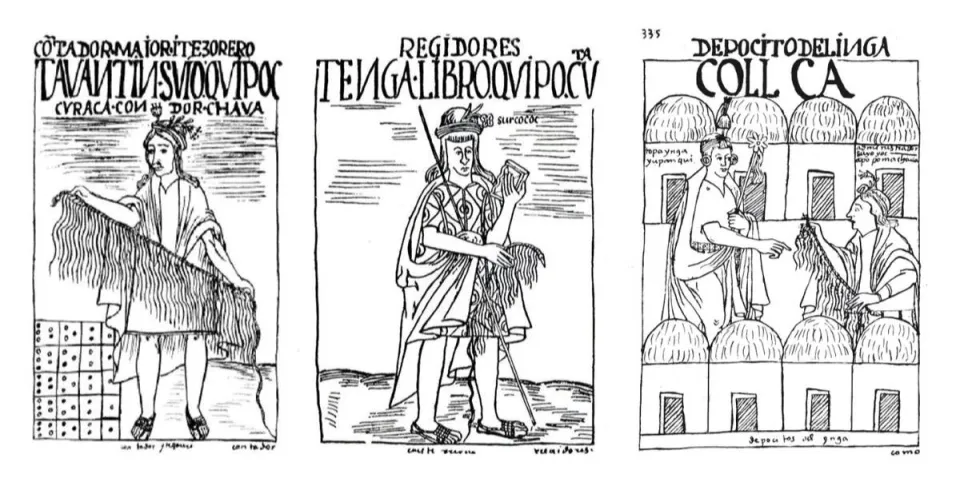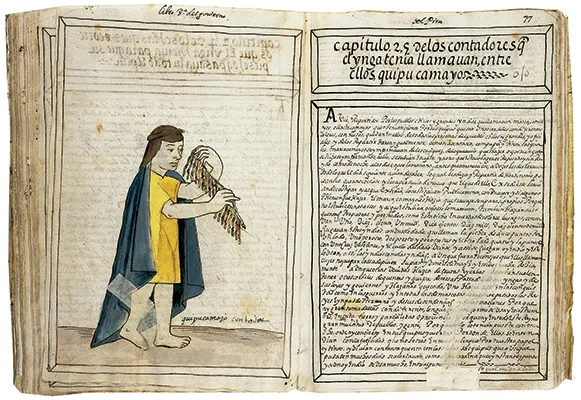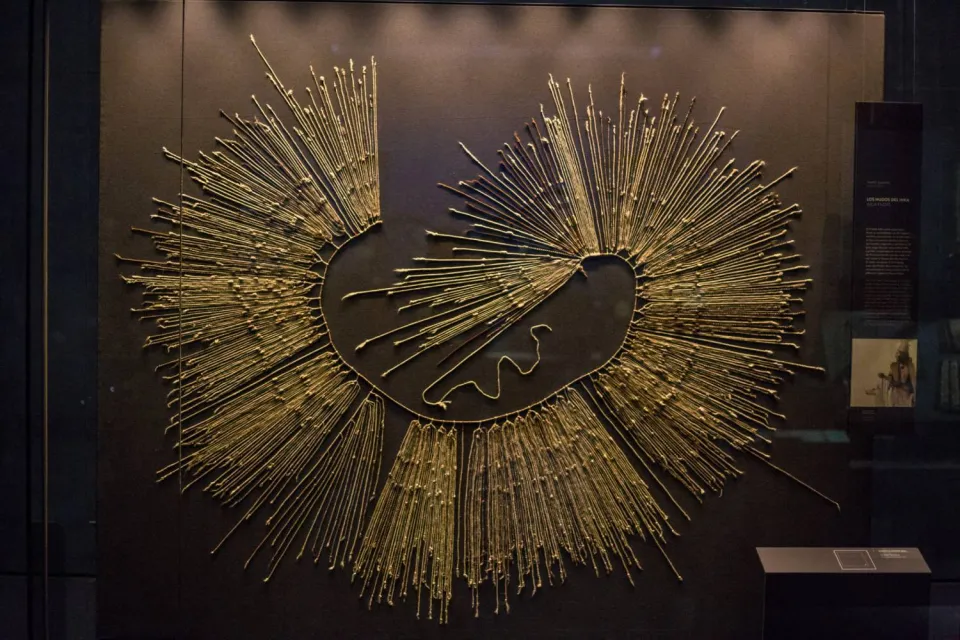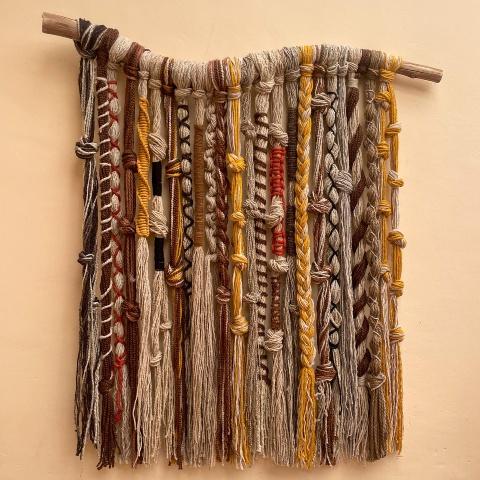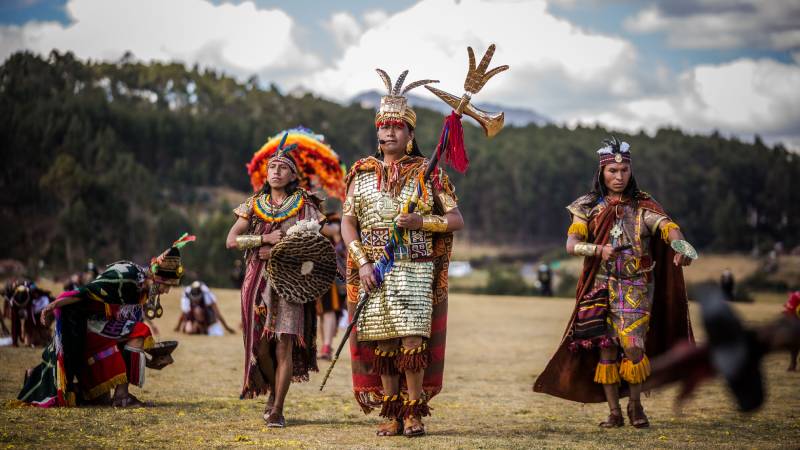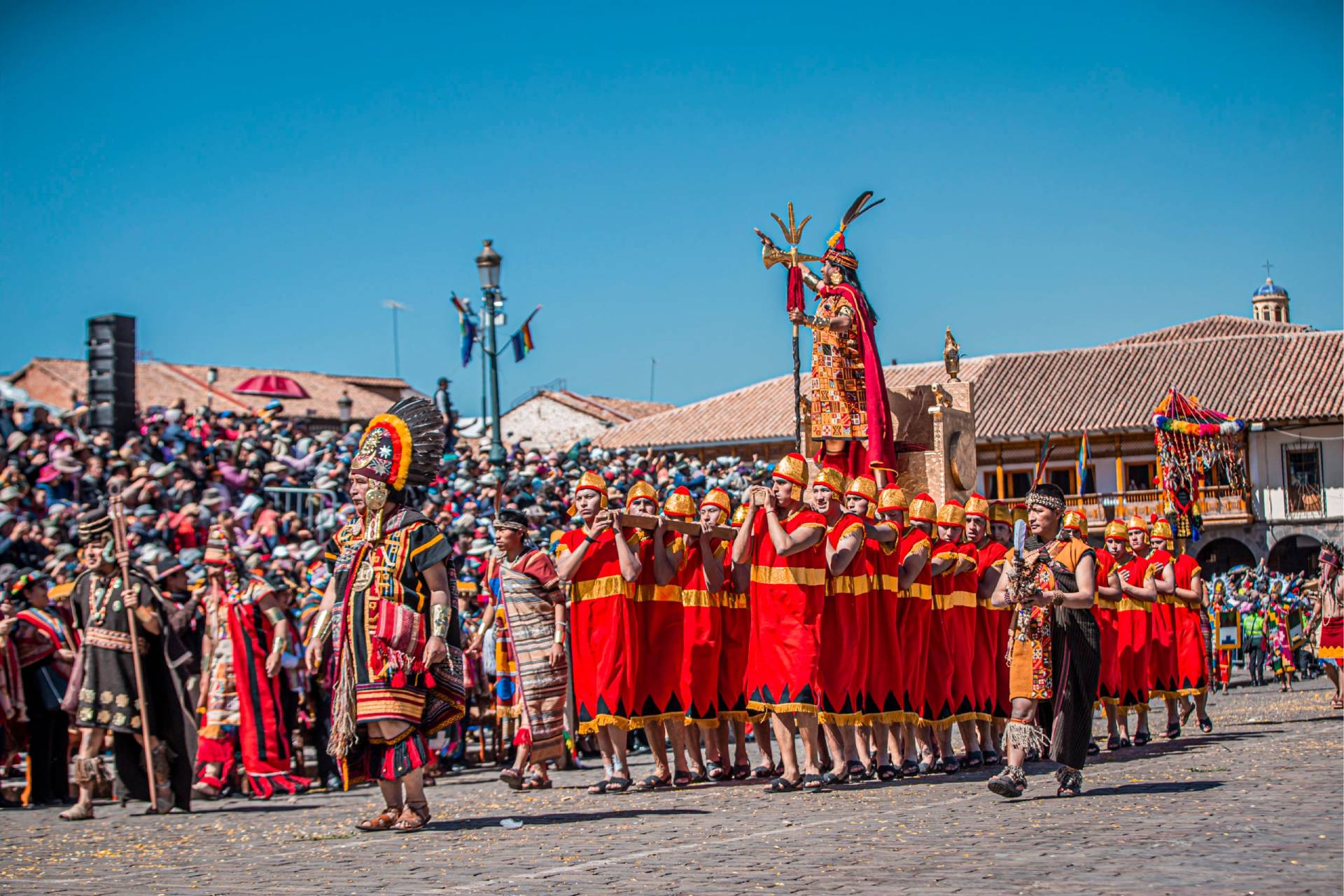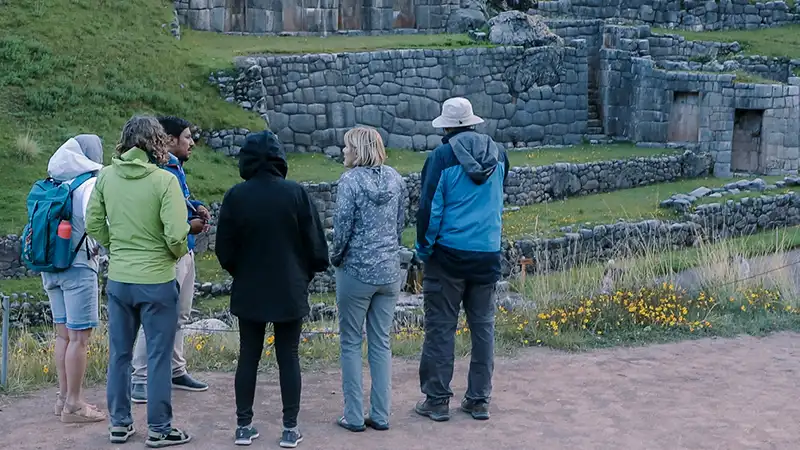Did you know the Incas managed an empire of 10 million people without using an alphabetic writing system? They did it with the quipu, a system of colorful cords and knots that still puzzles historians today.
If you’ve ever wondered “What Was Quipu Used For?”, you’re about to discover the secrets behind these knotted strings. Far more than just accounting tools, quipus helped the Incas keep detailed censuses, control harvests, and record taxes with remarkable precision.
Even more fascinating, some researchers believe that quipus also hold stories and hidden messages from the empire—waiting to be decoded like an Andean “Da Vinci Code.”
Ready to uncover how these “talking knots” held together the most powerful empire in South America?
What is quipu?
A quipu is a set of wool or cotton strings with knots of different shapes, colors and positions. This complex system allowed the Incas to record and transmit accounting, numerical and even narrative information, according to the most recent studies.
Specialists called quipucamayocs managed the quipus and carefully avoided errors, knowing that even a minimal change in the color, shape, or position of a knot could alter the recorded information. Each characteristic of the quipu had a well-defined purpose within this sophisticated communication system.
what does quipu mean?
The word quipu comes from the Quechua word khipu, which means “knot”. However, some researchers relate its meaning to “talking knots” because they also used quipus as a visual writing system.
What did a quipu look like?
Artisans crafted quipus using cotton or wool strings from Andean animals such as llamas, alpacas, vicuñas, or guanacos. They dyed these strings with different colors based on the information they needed to record.
The most common colors on quipus were: brown, crimson, purple, green, red, black, yellow, white, light blue, blue and orange.
- Main rope: thick and horizontal, from which the rest of the ropes hung.
- Hanging ropes or branches: tied to the main rope, they could have different colors, lengths and number of knots according to the information recorded.
- Knots: artisans tied them onto the hanging ropes in different positions and shapes (simple, long, eight-shaped), each carrying a specific numerical value.
- Colors: they allowed to expand the range of information, indicating categories such as goods, people, crops or tributes.
Did you know that some quipus had more than a thousand hanging strings?
This level of complexity allowed the Incas to record censuses, harvests and tributes from different communities over the years, without the need for alphabetical writing.
What was the quipu used for in the Inca empire?
The Incas used the quipu system to efficiently manage many aspects of their empire. Thanks to this system they could:
- Register taxes and tributes of each community.
- Keep census of people, llamas and alpacas.
- Update population and property records.
- Control agricultural production in each region.
- Manage the storage of food reserves.
- Organize community work (mit'a).
- Maintain agricultural calendars and rituals.
- Register the hierarchical authorities in each ayllu or community.
The most recent research suggests that the Incas also used the quipu for artistic and literary purposes, recording historical events, legends, genealogies, and even sending messages through messengers called chasquis.
The quipu used a decimal system, which made it possible to record figures of up to tens of thousands of units. In addition, this system facilitated the classification of censuses, since the Incas could differentiate between men and women, specific populations or types of productive activities, all through the combination of colors, knots and positions on the strings.
Structure of the quipu
Types of knots and their meanings
Quipus used different types of knots to represent numbers and, possibly, associated concepts. The quipucamayoc were in charge of reading and interpreting these knots accurately.
Simple knot
- Description: a single simple knot.
- Use: it represented the number 1 in the position of the units.
- If two simple knots appeared in a row, they meant 2, and so on.
Long knot (or knot with turns)
- Description: a knot with several turns wound around the string.
- Use: each turn represented a number from 2 to 9, depending on the number of turns.
- Example: a knot with 4 turns equaled 4.
Figure of 8 knot
- Description: a knot that looks like an 8 or a double loop.
- Use: used to represent the number zero or as a special marker in some cases.
Position of knots = decimal value
Quipus operated under a decimal system:
- Knots closer to the main chord represented larger values (hundreds, thousands).
- The knots at the bottom indicated units and tens.
Example of reading:
- One long knot of 5 turns at the top = 500
- Two simple knots in the middle = 20
- One simple knot at the bottom = 1
Total: 521
Colors and their codes
Artisans varied the color of the strings and knots according to the type of information they recorded, adding an additional level of coding to the quipu:
| Color | Sector |
| Yellow | Gold |
| Red | Army |
| White | Silver |
| Crimson | Inca |
| Black | Time |
| Brown | Government |
| Purple | Curaca |
| Green | Conquest |
| Light blue | respect |
| Blue | Water |
| Orange | Superiority |
In addition, the thickness of the strings could also indicate the level of hierarchy of the information recorded.
Types of quipu
The chronicler Guaman Poma de Ayala pointed out the existence of four types of quipus in the Inca Empire:
Account or numerical quipus:
Inca officials used these quipus to keep classical numerical records such as tributes, censuses, and the counting of goods.
Narrative Quipus:
These strings not only contained numbers, but also important events, stories, legends or battle strategies.
Control quipus:
They allowed to manage villages, resources, population and tributes, as well as to perform counts and information updates to maintain administrative order.
Calendrical Quipus:
Inca administrators used these quipus to record agricultural cycles and important festivities, ensuring close monitoring of the empire’s productive and ceremonial activities.
How to read quipu?
Although many historians continue to study this intriguing system, they have not yet deciphered the complete code of the quipu, leaving it a mystery to this day.
However, we do know that each string represented a specific category or purpose, related to the different productive activities of the empire.
The knots found on these hanging ropes recorded quantities, including zero, which allowed the representation of very large numbers according to the shape, position and direction of each knot, indicating units, tens, hundreds and thousands.
In addition, the color, width and length of each string indicated the type of information recorded. For example, a red string could indicate information related to the military, while a yellow string could refer to gold records.
How is a quipu read?
Readers follow the main string from right to left when reading a quipu. It is important to observe the position, type and number of knots on each hanging rope to identify the numerical value, while the color indicates the type of information recorded.
Knot values
Recent research has identified three main knot types, known as “Inca knots”:
Simple knot:
- It represented tens, hundreds, thousands and tens of thousands, depending on its position on the string.
- When it appeared at the bottom, it indicated units, and when it was at the top, it indicated larger values.
Long knot (or with turns):
- It represented values from 2 to 9, according to the number of turns of the knot.
- Example: a knot with 4 turns = 4:
Knot in the shape of eight (figure of 8):
- Represented the number 1 in a specific way.
- It functioned as a special marker in some records.
When a hanging rope had no knots, it was interpreted as the value zero.
The quipus worked with a decimal system, allowing to represent values up to 10,000.
The distance or placement of the knot
The position of the knot on the hanging rope determined its value:
- Top part: higher values (ten thousands, thousand, thousand, hundred, ten).
- Middle part: intermediate values (tens, hundreds).
- Lower part: smaller values (units).
The space separating each knot also indicated the change in value from units to tens, hundreds or thousands.
Long knots were easy to read, since each turn was equivalent to its numerical value (from 2 to 9). Eight-shaped knots represented the number 1, and the absence of knots indicated zero.
Practical interpretation
To read a quipu, follow the order from right to left, analyzing each hanging rope and adding the value of the knots according to their type and position.
Example 1:
If a rope has three simple knots at the top (hundreds) and a long knot with four turns at the bottom (units), the value of the rope will be 300 + 4 = 304.
Example 2:
If a string has two single knots at the top (hundreds), five single knots in the middle (tens) and a figure-eight knot at the bottom (units), the value will be: 200 + 50 + 1 = 251.
Who used the quipu?
Only those who studied in the Yachayhuasi, the schools reserved for the children and grandchildren of Inca nobility, could use the quipu, since mastering this complex system required specialized knowledge.
Some shamans also learned to understand the complexity of this system in order to use it in ritual practices and community organization.
Quipucamayoc
The word quipucamayoc comes from Quechua and means “guardians of the quipus”. These specialists were in charge of elaborating, reading, interpreting, archiving, maintaining and guarding the quipus in the Inca Empire.
The quipucamayoc worked for the Inca State, serving the Sapa Inca as official officials responsible for recording census data, tributes, crops, animals and other key aspects of the administration of the empire.
Historians point out that, in order to become a quipucamayoc, it was necessary to have a prodigious memory, since an error in the interpretation of a quipu could lead to severe punishments by the Sapa Inca. Furthermore, the Inca authorities authorized only them to read and communicate the contents of the quipu.
Within the Inca State, the quipucamayoc could perform the following functions:
- Secretaries of the Inca
- Secretaries of the Royal Council
- Senior accountants
- Treasurers of the Tahuantinsuyo
- Administrators of provinces
Each city, town and village had local quipucamayoc, who acted as scribes, accountants and treasurers of the empire. Inca families passed down this office from generation to generation, making it a hereditary position within their society.
The Inti Raymi placed the quipucamayoc at the center of the ceremony, as each regional leader presented reports to the Sapa Inca while the people worshipped the Sun and the Inca during the festivity.
Therefore, the presence of a quipucamayoc was essential to read and communicate these records during the ceremony.
The Inca
The Sapa Inca relied on the quipucamayoc to receive detailed reports from all the regions of the empire. Although the Inca did not read the quipus directly, he used them as a tool of government and control, receiving clear and orderly reports that allowed him to make strategic decisions about tribute, population, resources and harvests throughout Tahuantinsuyo.
History of quipus
Quipus before the Inca Empire
The origin of this advanced system dates back to ancient Peru, in the middle of the first millennium AD. For years, historians believed that an amauta (master and sage) of the Yachayhuasi invented this system during Mayta Capac’s rule in the 14th century.
However, more recent research has shown that this invention emerged long before Mayta Capac's rule, probably more than 2500 years BC.
This means that a prototype quipu existed in the Huari (Wari) Empire, whose capital was in the present-day city of Huari, Peru. In fact, quipus have been found in its ruins, which chronologically are located 4,000 years before the arrival of the Incas.
Quipu and the Inca Empire
The Incas adopted and perfected this system, turning it into a universal method of accounting and communication, useful for coordinating the different languages spoken in the Tahuantinsuyo.
The quipu was also fundamental in the conquests of the Sapa Inca. Each time he conquered a new area, the Inca traveled there with his accountants and inventory takers to gather information about streams, fields, population and their activities such as agriculture, mining and fishing.
The Inca’s accountants and messengers carried all this information to Cusco and presented it to the Sapa Inca, who, together with his advisors, made decisions about administering the new region.
In his books, the Inca chronicler Garcilaso de la Vega explains that the chasquis, the Inca messengers, carried encrypted quipu codes along the Qhapaq Ñan (Inca Trail), allowing the Sapa Inca to manage the empire and deliver news quickly to even the most remote villages.
During Atahualpa’s rise to power, his officials ordered the destruction of ancient quipus that contained records linked to his half-brother Huáscar, attempting to erase Huáscar’s history and rule.
The end of the quipu after the arrival of the Spaniards
After conquering the Inca Empire (1532-1572), the Spanish invaders introduced their language and writing, searched for quipus and similar records, and destroyed them because they distrusted the information they might contain and feared they could help organize revolts.
Not only did they destroy quipus, but also tablets painted with dots and colors that contained encrypted information, since the colonizers never learned to read or translate these systems.
Due to this persecution, only 600 examples of quipus survived, found in excavations on the Peruvian coast and highlands between the 15th and 16th centuries. Today, these quipus are in museums in Germany, the United States, Peru and in private collections.
Very few quipus have survived, and many say that even Hiram Bingham did not find any during his excavations at Machu Picchu.
Today, some Quechua communities in South America still use quipus to record their livestock numbers as part of their herding traditions.
The use of the quipu dates back from 2600 BC to 1532 AD.
If you are passionate about Inca culture, here are some books by reliable chroniclers of the time that will allow you to learn more about this system and the empire:
- Nueva Crónica y Buen Gobierno, by Guaman Poma de Ayala
- Suma y Narración de los Incas, by Juan de Betanzos
- Comentarios Reales, by Garcilaso de la Vega (Part II)
- El Antiguo Quipu, un Registro de Nudos, by Leland Locke.
These books hold great value because the authors spoke with people who lived through Inca history and shared relevant, reliable details.
Why have we still not completely deciphered the mysterious Inca quipus?
Despite the great efforts of scholars and Harvard professors, the coding of the quipus has still not been completely deciphered. While we now know that the knots represent numbers and the colors indicate themes, the combination of colors with numbers has not yet been deciphered.
The expert on quipus, Gary Urton, states in his book Mathematics and Accounting in the Andes:
“We still cannot read the nominative labels, which seem to have been encoded in the colors and other structural features of the strings.”
Recently, the mystery has deepened after the discovery of new quipus that did not follow the traditional decimal system, but rather different patterns, which could indicate that they are narrative quipus. According to many colonial chroniclers, these quipus were used to record memories, exploits and poems that only the quipucamayoc could read.
To solve this enigma, it has been sought to find the so-called “Rosetta quipu”, a term coined by Gary Urton. This quipu would be a key piece that contains a reliable interpretation in Spanish, allowing to unlock the reading of the rest of the quipus.
Urton explains that there are between 40 and 50 known colonial transcriptions, but none match the existing quipus. However, there are still many colonial documents to be reviewed in archives in Spain, and the search continues for a transcription that will allow a quipu to be linked to its direct interpretation in Spanish.
Given that there were language variations in Tahuantinsuyo, the question arises as to whether quipus were handled in a standard way or whether there were regional or ethnic differences in their recording. According to Urton, quipus were used in a standardized way throughout the empire.
In conclusion, specialists believe that, if a direct transcription of a quipu into Spanish is found, it would be the key to finally understanding all quipus, but so far, this ancestral enigma remains unsolved.
Where can you see quipus today?
Museums in Peru with quipus exhibits
If you want to see original quipus from the Inca period and other Inca artifacts, you can visit these museums in Peru:
- National Museum of Archaeology, Anthropology and History of Peru (Lima)
- Inka Museum (Cusco)
- Larco Museum (Lima)
- Temple Radicati Museum (Lima).
Also, don't be surprised if you find quipus in handicraft markets, souvenir stores or alpaca boutiques. Generally, these quipus are replicas made by Inca descendants, allowing tourists to observe them up close and purchase them as souvenirs of their visit.
If you visit Cusco, it is common to find quipus as part of the decoration in hotels, restaurants and cultural centers, keeping alive the tradition of this ancestral tool.
In some Peruvian communities, families keep quipus as an inheritance, transmitting them from generation to generation as a symbol of their cultural identity.
If you are abroad, you can visit the exhibition “Infinity of Nations” at the National Museum of the American Indian in New York, where you can see original quipus and learn more about their importance in Andean civilizations.
Frequently Asked Questions
- How many quipus have been found?
To date, about 600 Inca quipus have been found in museums and private collections around the world, including Peru, the United States, Germany and other countries.
- Were quipus used only by the Incas?
No. As we saw earlier, records have been found that show that the Wari culture (prior to the Incas) already used a system similar to the quipu, demonstrating that this recording tool has much older origins.
- Were quipus a form of writing?
Yes, thanks to recent research, it is believed that there were narrative quipus that the Incas used to communicate stories, tales or war strategies, transported by the chasquis throughout the empire.
- Are there online courses on the quipus?
Yes. You can find online courses where you will learn about the history, meaning and reading of quipus, such as:
- EdX - Ancient Bookkeeping and the Quipu (Harvard University)
- Workshops and conferences of the Pontificia Universidad Católica del Perú (PUCP)
- Webinars of the Machu Picchu Museum - Casa Concha (Cusco).
- Where can I buy a quipu?
The original Inca quipus are not for sale, as they are kept in museums in Peru and Europe.
However, you can buy handmade replicas of quipus in markets and craft stores in Cusco, made with respect by descendants of the Quechua people.
Quipu with the main rope made of stick Quipu for the sale of colored hanging ropes - Quipu or khipu?
Since there is no standardized writing system for Quechua, both forms are correct. You can find them written as quipu, khipu, qipu or kipu, depending on the author or institution documenting them.
- Was the quipu the first operating system?
Yes, according to author and documentalist Kim MacQuarrie, quipus can be considered the predecessors of operating systems, since they were a unique system for recording and organizing information.
MacQuarrie makes an interesting analogy by considering that quipus were mankind's first “computers” or counting machines.
- How was a quipu made?
To make a quipu, the Incas first obtained cotton or Andean camelid fibers, which were dyed with natural dyes of different colors according to the information to be recorded.
Then, they placed a main rope in a horizontal position and began to knot the hanging ropes according to the necessary records, using different types of knots, colors and positions.
- What does the largest quipu look like?
The largest quipu found have up to 1500 hanging strings, each woven and dyed in different ways to record various types of information.
The quipu is not just a set of knotted strings: it is the memory of an empire that managed to organize its society in an efficient and controlled way, without paper or ink.
Now that you know what it is, what it was used for and who used it, the next time you see a quipu in a museum, you will remember that there are still threads of history to be deciphered, waiting for someone to give them back their voice.

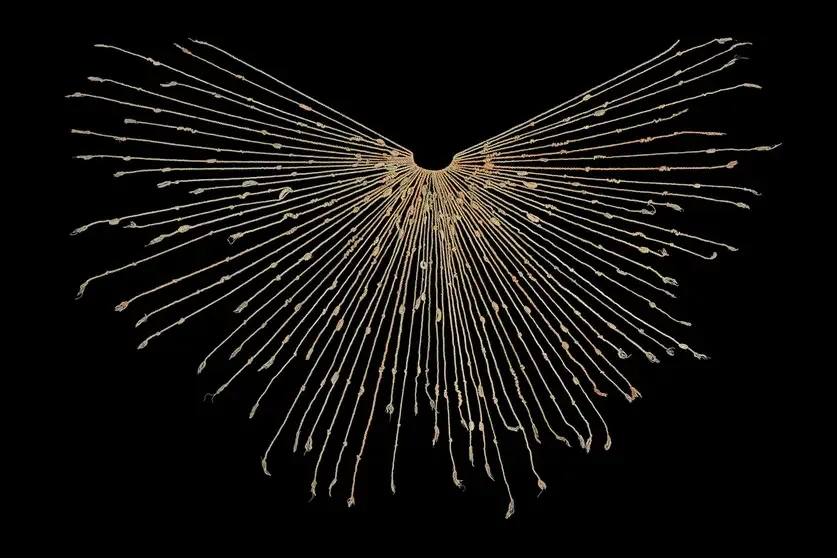
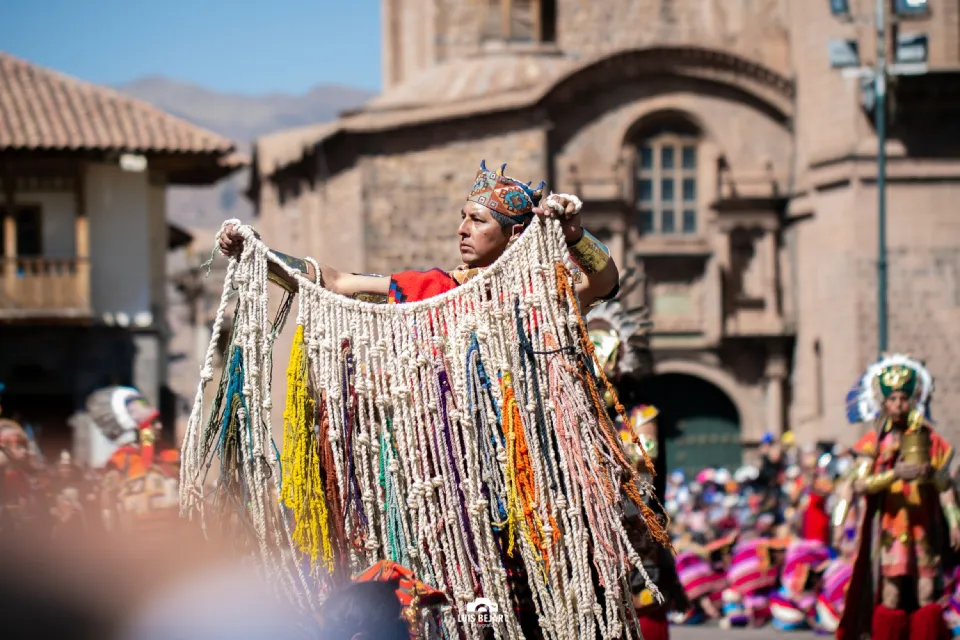
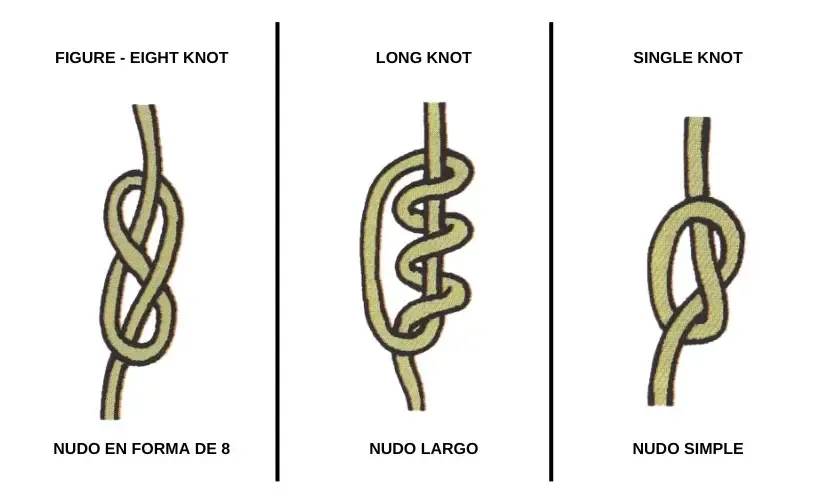
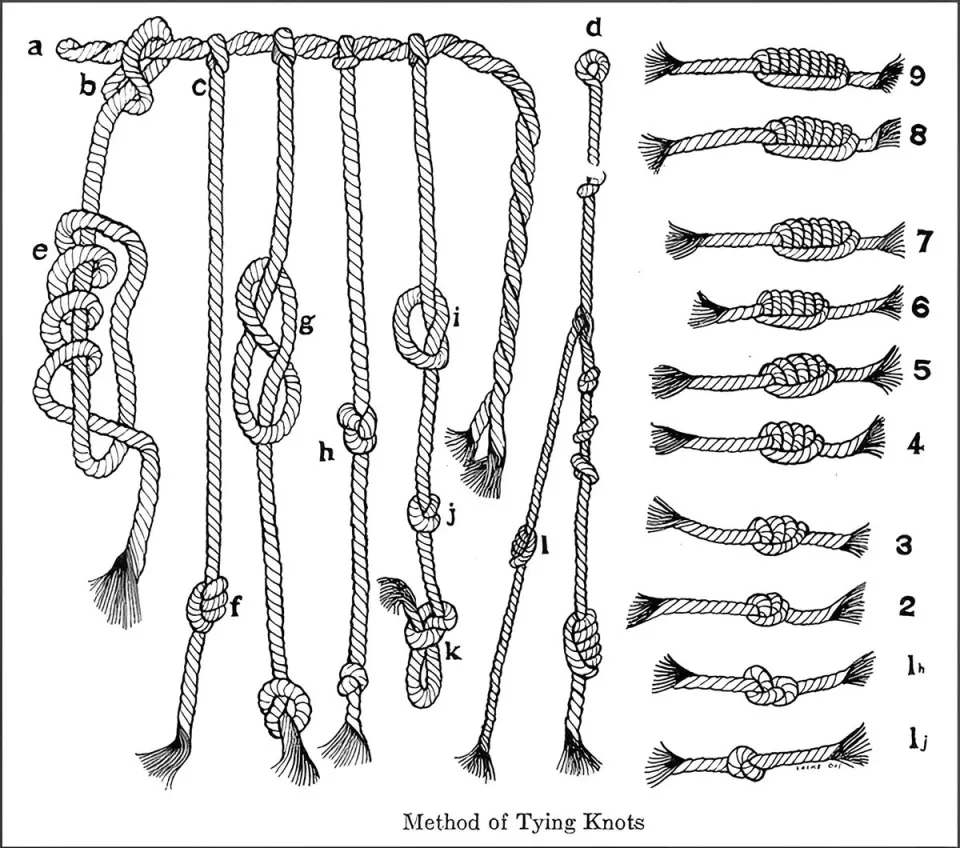
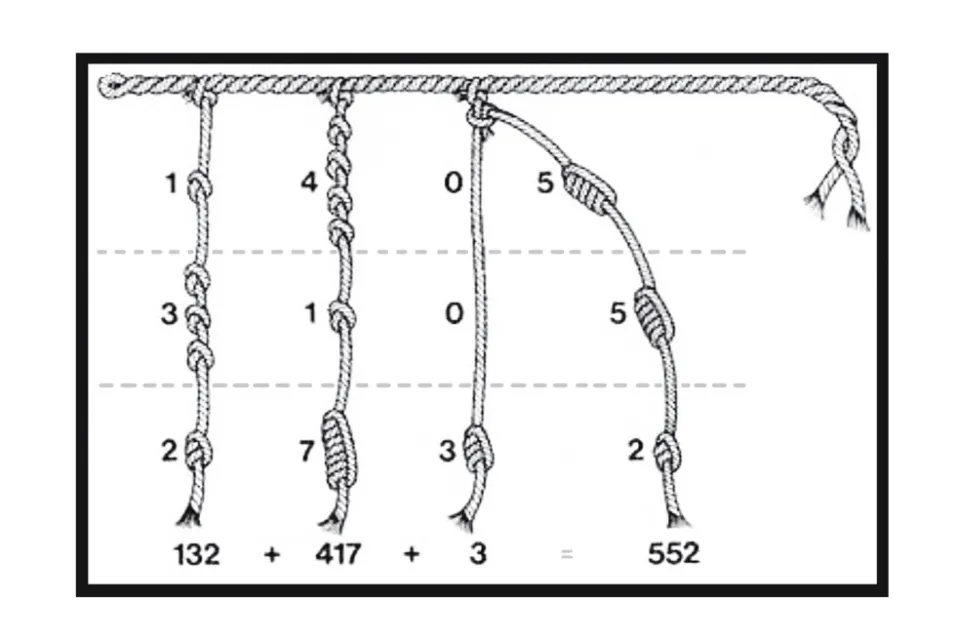
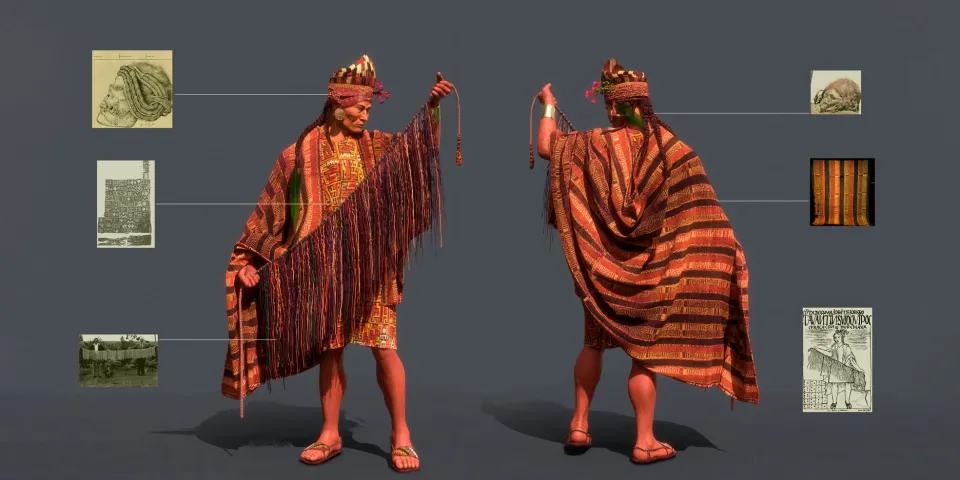

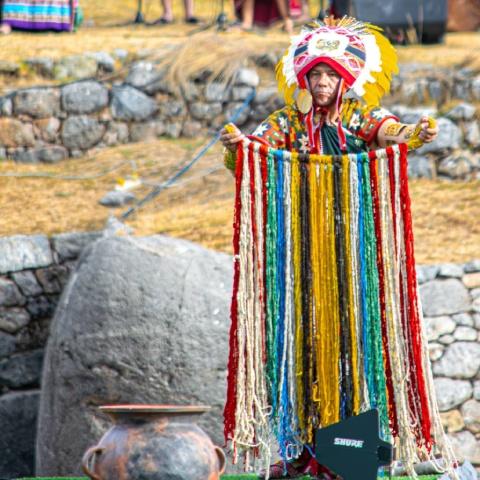
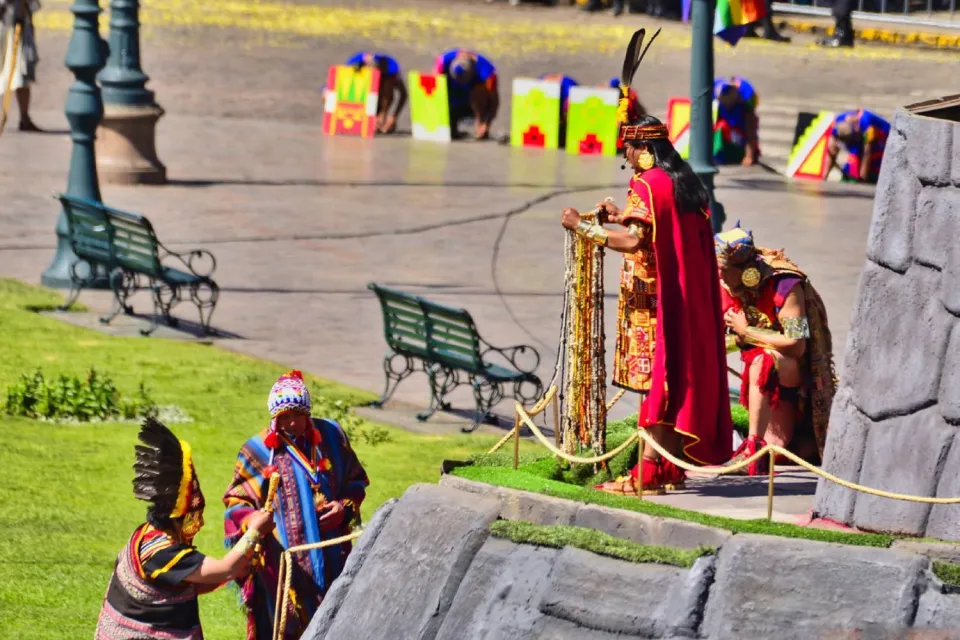
![The Wari style Quipu from 500 to 1200 AD | Ultimate Trekking The Wari style Quipu from 500 to 1200 AD | Ultimate Trekking Graphics made by the chronicler Guaman Poma de Ayala. A Quipucamayoc with a quipu of multicolored strings. Drawing, by the Spanish chronicler Martín de Murúa [1590].](/sites/default/files/2025-07/quipus-news.jpg)
